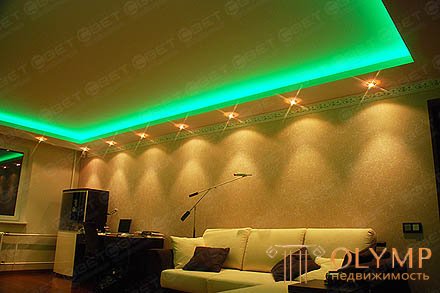
Coziness and comfort of a modern apartment depend on high-quality lighting , thanks to it we are able to completely change the perception of the most boring interior. The possibilities of the newest lighting systems are so wide that, depending on the situation, without any rearrangement of the furniture, the room can be presented in various ways. Today we will tell about the lighting of living rooms, as well as news of the market of lighting equipment and the corrective role of light in changing the look of the space.
We are very accustomed to the old, conservative lighting design of the room, but the traditional chandelier or ceiling fixedly mounted in the center of the room, floor lamps and wall lamps with static, once and for all selected directions of light streams do not meet modern demands in lighting space. The main criteria today are mobility and diversity, which can be achieved by combining comfortably diffused or reflected lighting with moving light accents created by bright beams of directional light.
 It is possible to list the novelties of the lighting market for a long time, but we will focus only on a few of the most popular and interesting options. Very pleasant for the eyes illumination, characterized by soft shadow-forming properties and uniform distribution of the brightness of light reflected from the surface of the walls, the ceiling and the floor, give ceiling lamps in the form of a ball or hemisphere. They are opaque and do not let the blinding light, breaking direct rays.
It is possible to list the novelties of the lighting market for a long time, but we will focus only on a few of the most popular and interesting options. Very pleasant for the eyes illumination, characterized by soft shadow-forming properties and uniform distribution of the brightness of light reflected from the surface of the walls, the ceiling and the floor, give ceiling lamps in the form of a ball or hemisphere. They are opaque and do not let the blinding light, breaking direct rays.
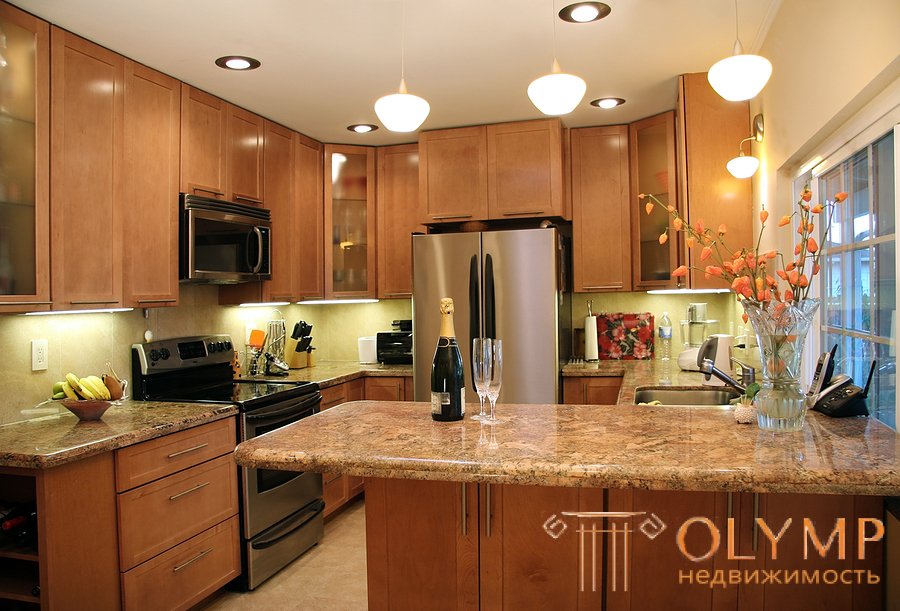 The scattered light received from them has the highest utility coefficient and is best suited for general lighting. Such light sources can be placed completely free, they can “travel” along the entire upper plane of the room. The same type of lighting can create and Halogen lamps mounted on metal structures or mounted in suspended or suspended ceilings.
The scattered light received from them has the highest utility coefficient and is best suited for general lighting. Such light sources can be placed completely free, they can “travel” along the entire upper plane of the room. The same type of lighting can create and Halogen lamps mounted on metal structures or mounted in suspended or suspended ceilings.
It is interesting to arrange such sources at the ends of the suspended structures so that they are reflected from the horizontal surface, and the most convenient option is the one in which they can change the angle of illumination.
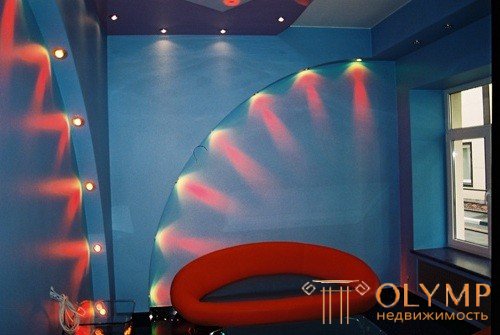 A very popular solution for creating general lighting is to place small ceiling lights along the upper perimeter of the room. Such sources reflect light from the ceiling and give most of it back, evenly scattering throughout the room. The reflected light makes the space weightless and transparent, and also creates the most comfortable and uniform lighting. A similar effect can be achieved by installing several floor lamps and sconces with shades, lampshades and reflectors directing the light into the ceiling. You can often find an option in which the ceiling lights are hidden behind a special ledge placed along the walls, this technique visually increases the volume of the room and favorably emphasizes the configuration of the space.
A very popular solution for creating general lighting is to place small ceiling lights along the upper perimeter of the room. Such sources reflect light from the ceiling and give most of it back, evenly scattering throughout the room. The reflected light makes the space weightless and transparent, and also creates the most comfortable and uniform lighting. A similar effect can be achieved by installing several floor lamps and sconces with shades, lampshades and reflectors directing the light into the ceiling. You can often find an option in which the ceiling lights are hidden behind a special ledge placed along the walls, this technique visually increases the volume of the room and favorably emphasizes the configuration of the space.
Chandeliers still continue to be elements of general lighting, especially as regards housing built in the classical style. But their central location is not necessary, the lamp must find its place where it is really needed, for example, above a dining group or a recreation area.
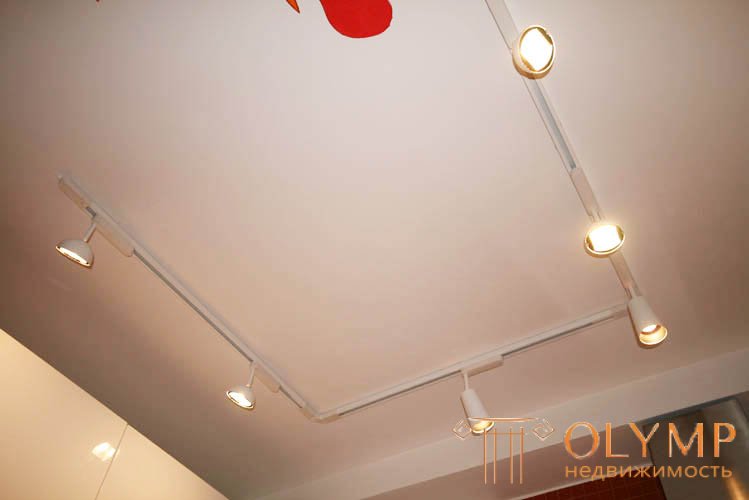 The best and most interesting option for lighting the room is to recognize the conductive structures , they allow for the greatest mobility.
The best and most interesting option for lighting the room is to recognize the conductive structures , they allow for the greatest mobility.
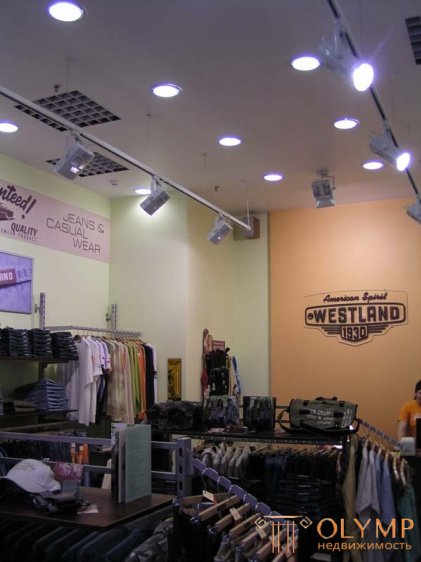 The design of such busbars is diverse: they can be fixed both to the ceiling and to the walls. Light elements located on these tires, easily change the angle of the beam and its location. For example, if you need to concentrate the maximum amount of light at any one point, you can easily move the elements to the right place; To create a general lighting, the light sources are placed in different parts of the room, and you can change the picture of the general lighting as many times as you like by simply changing the position of the lamps. Room lighting will be incomplete if you do not use local and decorative lighting. And for some rooms, such as an office or a bedroom, general lighting is even optional. In this case, the entire load on the light design of the space falls on local lighting. Table lamps, wall lamps and ceiling lamps with lampshades perfectly highlight the necessary object, leaving the rest of the room in the twilight. Good fit for this purpose and floor lamps. It is only necessary to select those models in which there is a bracket changing the position of the lamp and a control for the angle of rotation of the light element. If it seems to you that floor lamps have become outdated long ago, you should know that lately they have changed a lot and the modern model will fit so well into your interior that it can become an integral and favorite part of it.
The design of such busbars is diverse: they can be fixed both to the ceiling and to the walls. Light elements located on these tires, easily change the angle of the beam and its location. For example, if you need to concentrate the maximum amount of light at any one point, you can easily move the elements to the right place; To create a general lighting, the light sources are placed in different parts of the room, and you can change the picture of the general lighting as many times as you like by simply changing the position of the lamps. Room lighting will be incomplete if you do not use local and decorative lighting. And for some rooms, such as an office or a bedroom, general lighting is even optional. In this case, the entire load on the light design of the space falls on local lighting. Table lamps, wall lamps and ceiling lamps with lampshades perfectly highlight the necessary object, leaving the rest of the room in the twilight. Good fit for this purpose and floor lamps. It is only necessary to select those models in which there is a bracket changing the position of the lamp and a control for the angle of rotation of the light element. If it seems to you that floor lamps have become outdated long ago, you should know that lately they have changed a lot and the modern model will fit so well into your interior that it can become an integral and favorite part of it.
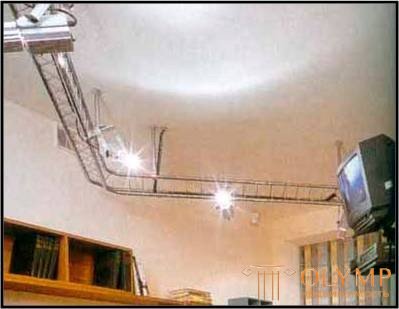 Decorative lighting will give to any interior, completeness and versatility. Highlight with direct rays the most advantageous details of the decor: niches, massive floor vases, sculpture and more. A very interesting look will be given to the lamps mounted in the wall, which will illuminate only these small niches, creating the effect of portholes. Another option for the light design of the walls is a low floor lighting, the rays of light directed to the walls will make the interior mysterious.
Decorative lighting will give to any interior, completeness and versatility. Highlight with direct rays the most advantageous details of the decor: niches, massive floor vases, sculpture and more. A very interesting look will be given to the lamps mounted in the wall, which will illuminate only these small niches, creating the effect of portholes. Another option for the light design of the walls is a low floor lighting, the rays of light directed to the walls will make the interior mysterious.
Properly installed lighting can not only correct the geometry of the room, but also mask what needs to be left in the shade, as well as create the necessary accents in the interior. We hope that these tips will help you.
Lighting design of a residential interior is important not only for eye health, it stimulates the brain and promotes good rest. Therefore, the selection of lighting for your apartment should be approached very seriously. Turning to the professionals, you will receive a 100% guarantee of high-quality, diverse and original lighting design of your home.
Что бы оставить комментарий войдите
Комментарии (0)